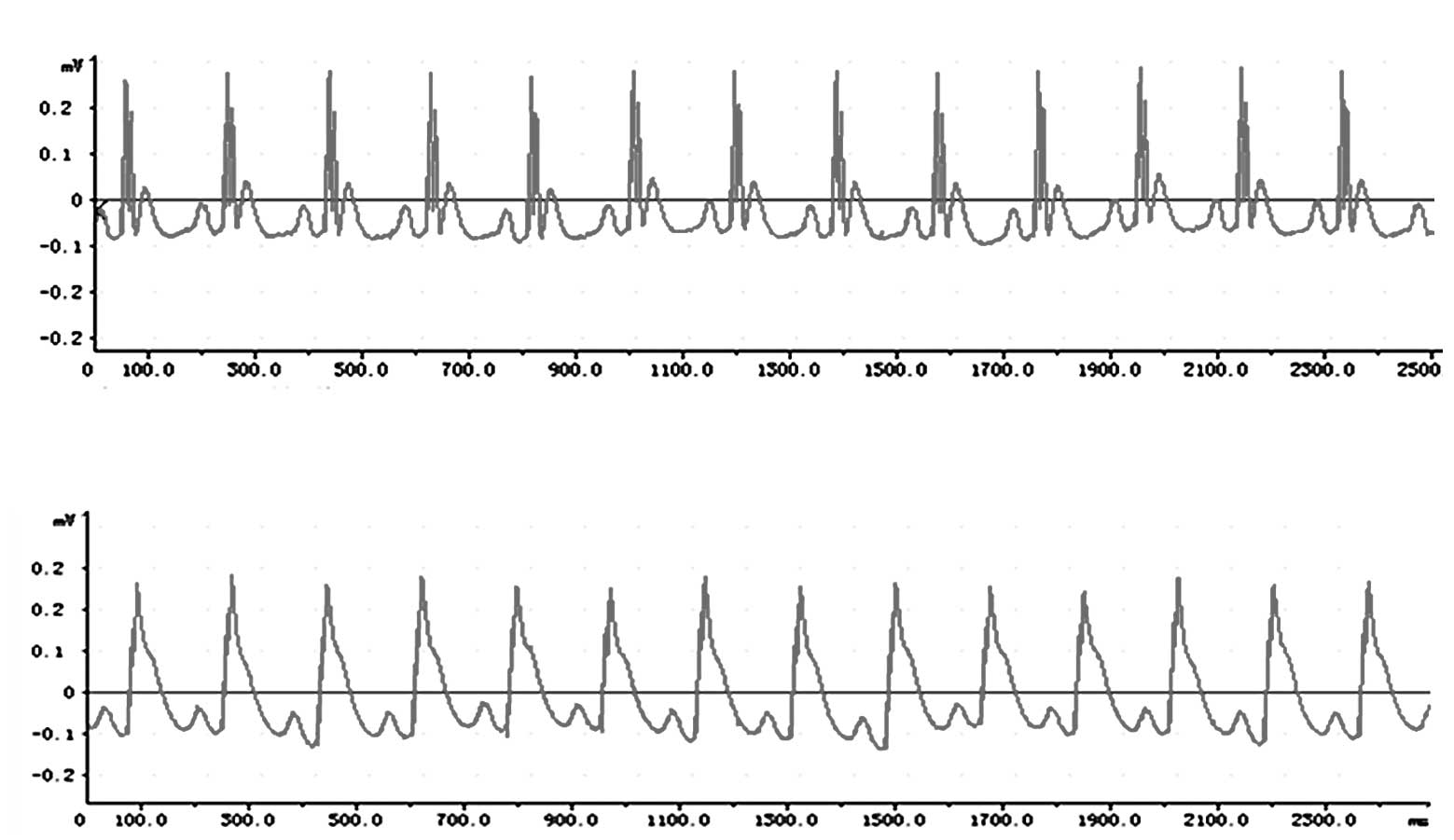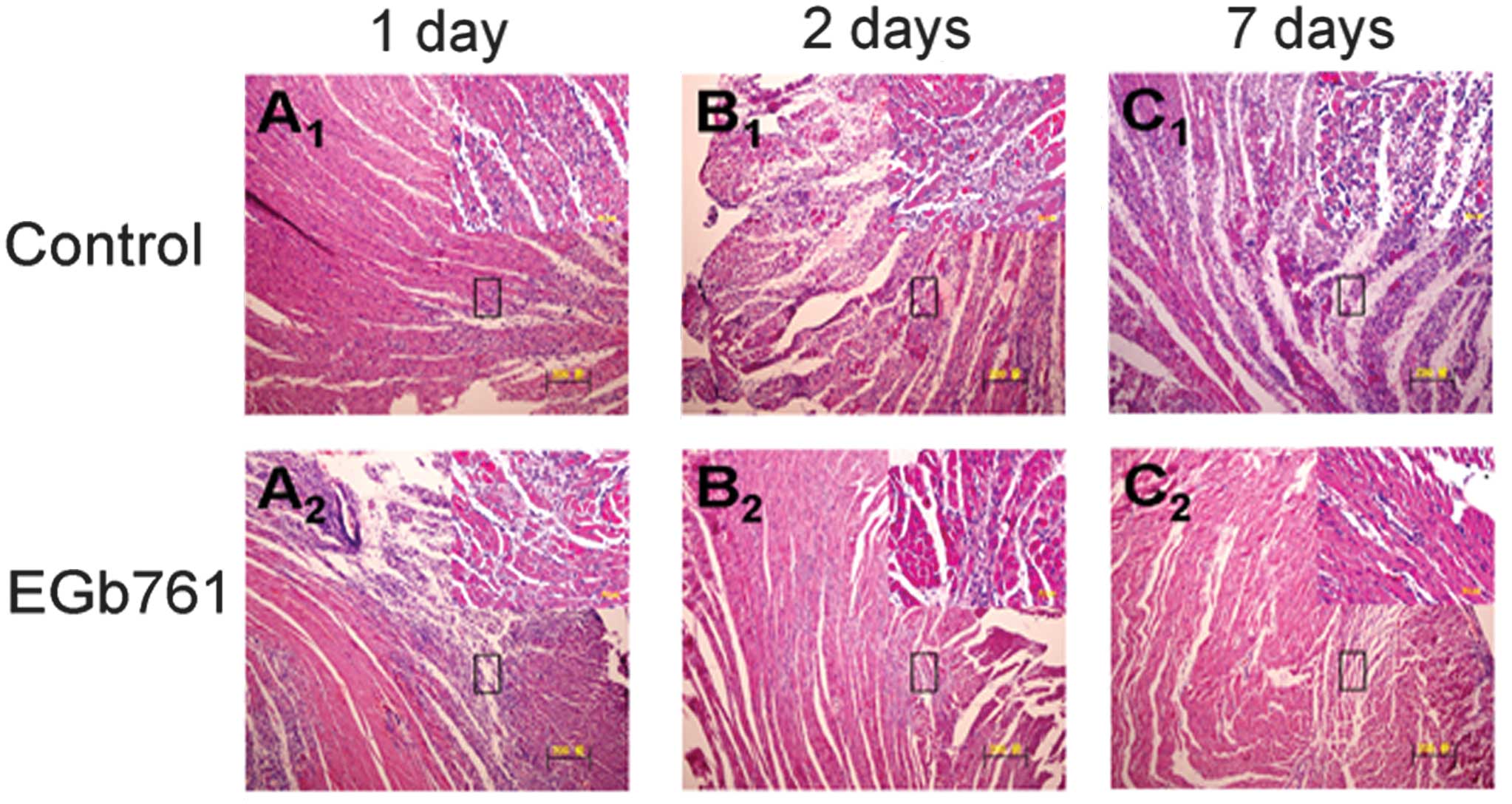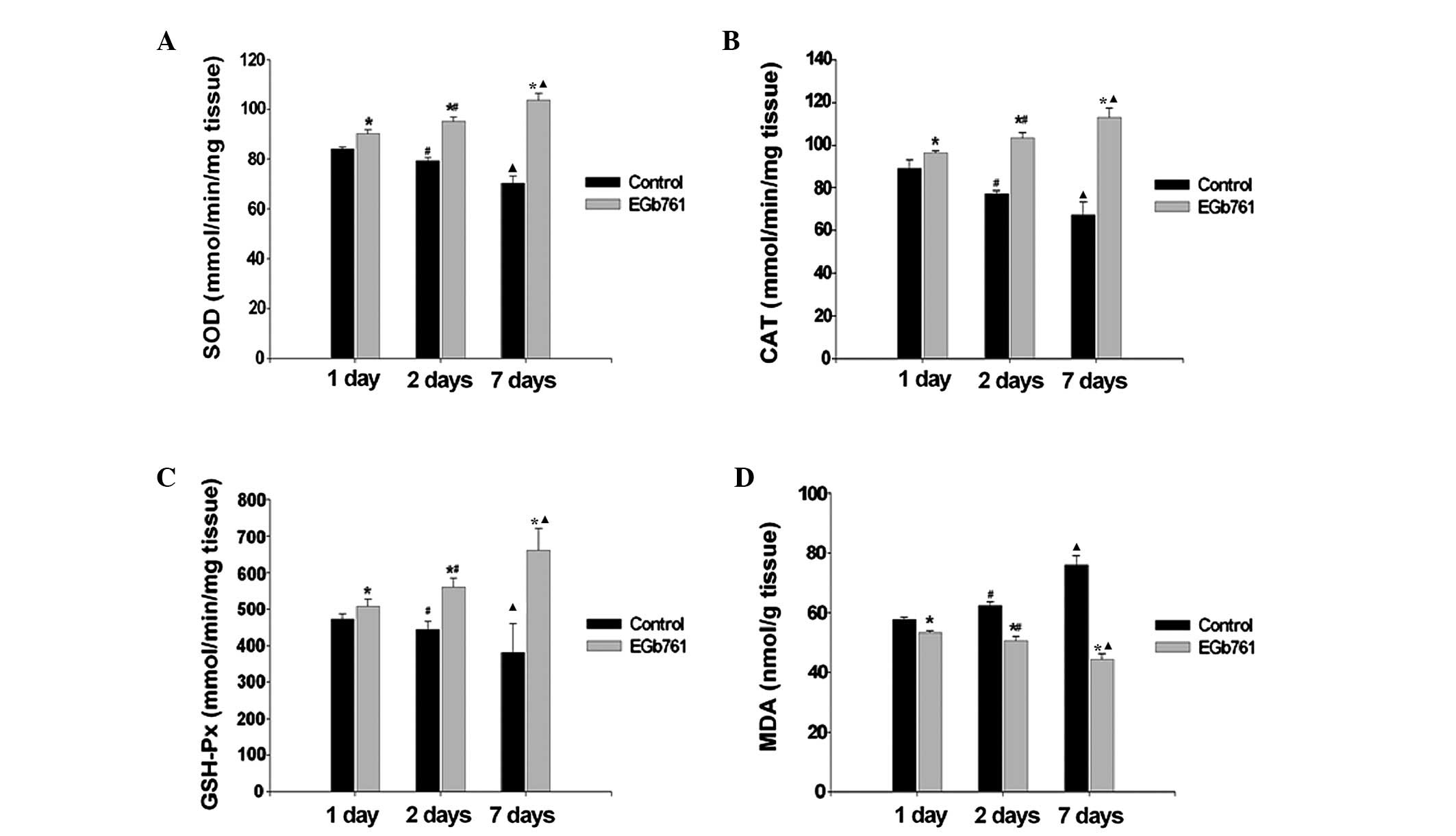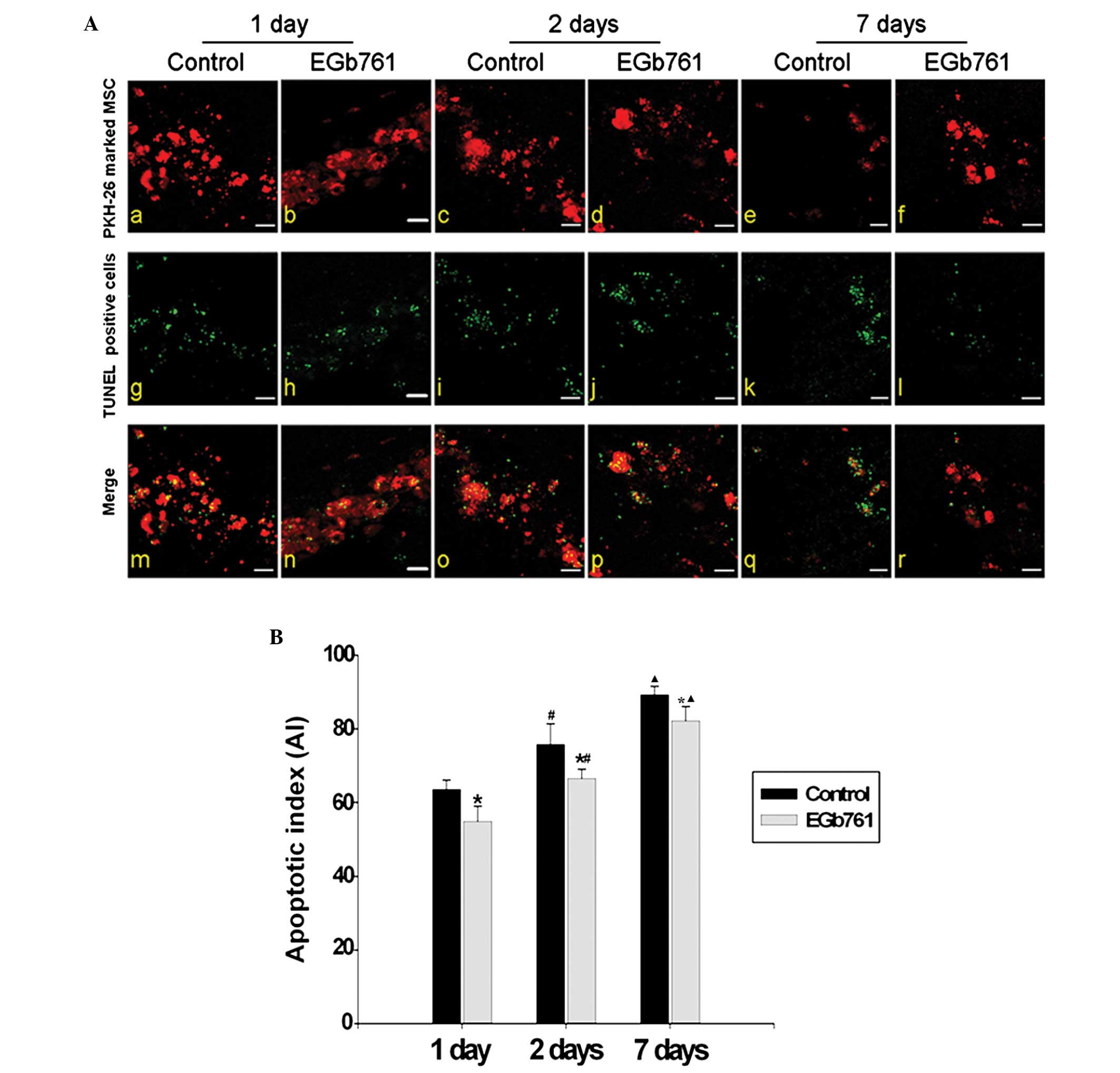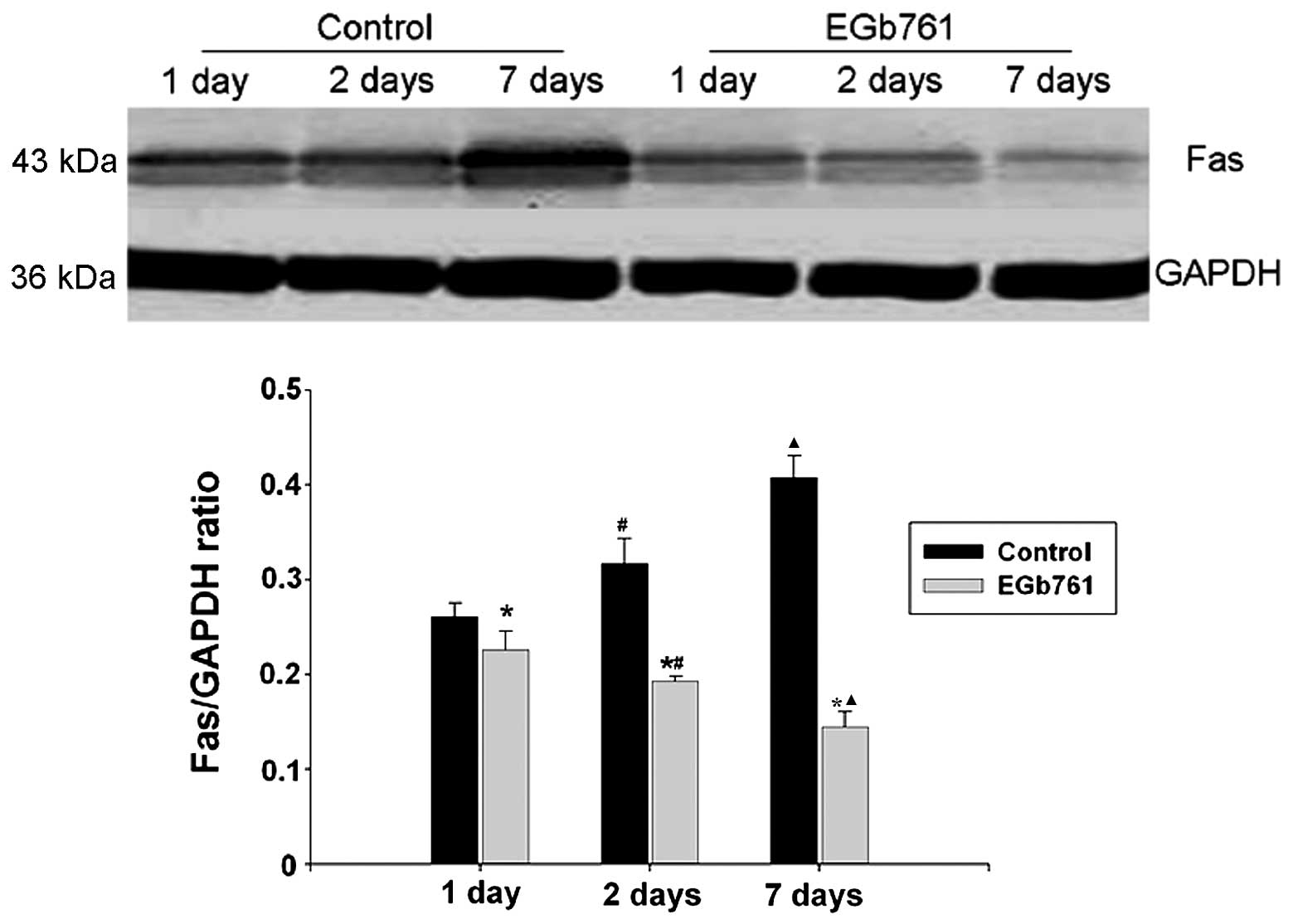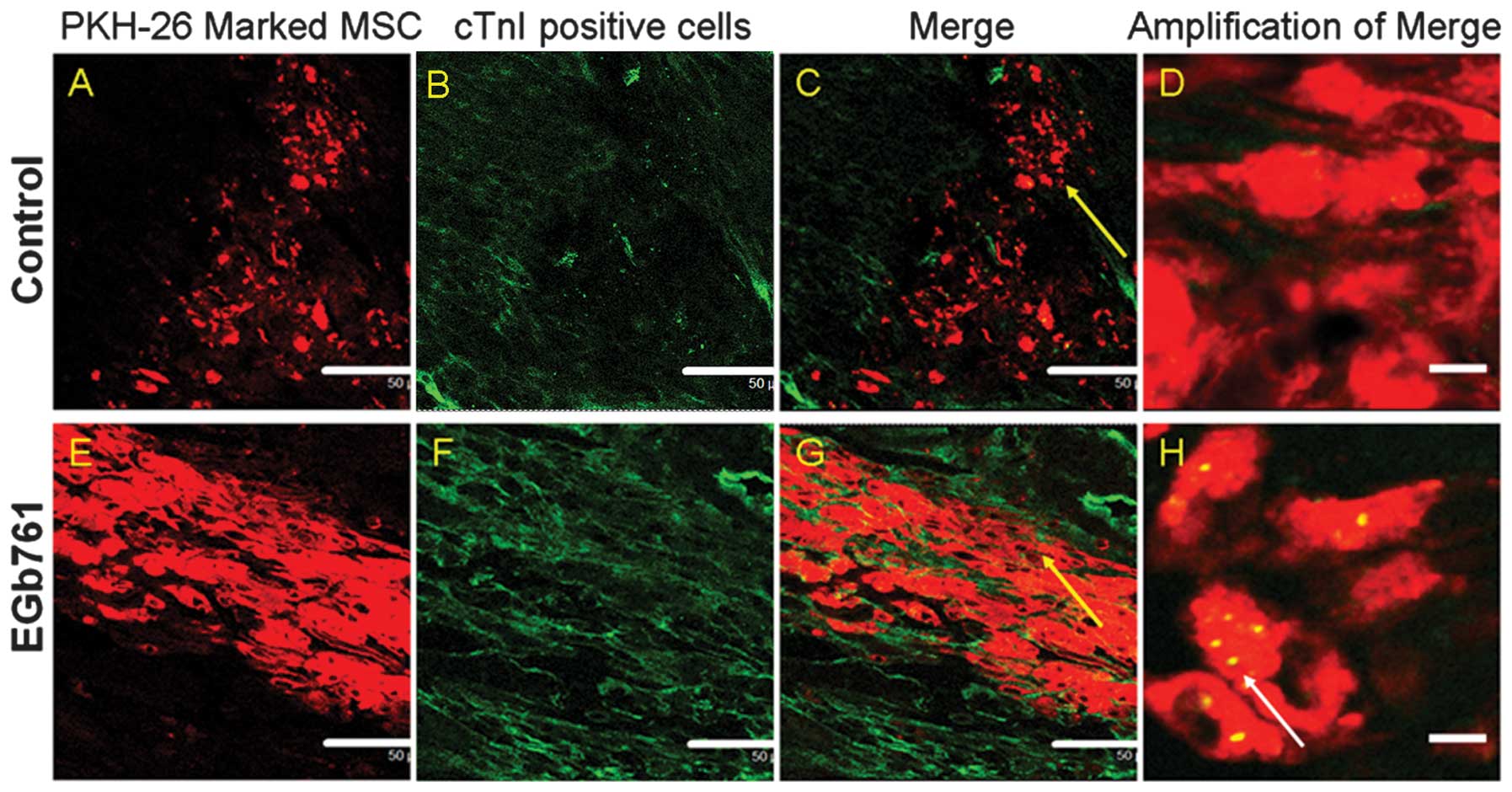|
1
|
Braunwald E and Bristow MR: Congestive
heart failure: fifty years of progress. Circulation. 102:IV14–IV23.
2000.PubMed/NCBI
|
|
2
|
Pittenger MF, Mackay AM, Beck SC, Jaiswal
RK, Douglas R, Mosca JD, Moorman MA, Simonetti DW, Craig S and
Marshak DR: Multilineage potential of adult human mesenchymal stem
cells. Science. 284:143–147. 1999. View Article : Google Scholar : PubMed/NCBI
|
|
3
|
Pereira RF, Halford KW, O’Hara MD, Leeper
DB, Sokolov BP, Pollard MD, Bagasra O and Prockop DJ: Cultured
adherent cells from marrow can serve as long-lasting precursor
cells for bone, cartilage, and lung in irradiated mice. Proc Natl
Acad Sci USA. 92:4857–4861. 1995. View Article : Google Scholar : PubMed/NCBI
|
|
4
|
Schäfer S, Calas AG, Vergouts M and
Hermans E: Immunomodulatory influence of bone marrow-derived
mesenchymal stem cells on neuroinflammation in astrocyte cultures.
J Neuroimmunol. 249:40–48. 2012.PubMed/NCBI
|
|
5
|
Kohyama J, Abe H, Shimazaki T, Koizumi A,
Nakashima K, Gojo S, Taga T, Okano H, Hata J and Umezawa A: Brain
from bone: efficient ‘meta-differentiation’ of marrow
stroma-derived mature osteoblasts to neurons with Noggin or a
demethylating agent. Differentiation. 68:235–244. 2001.
|
|
6
|
Orlic D, Kajstura J, Chimenti S, Jakoniuk
I, Anderson SM, Li B, Pickel J, McKay R, Nadal-Ginard B, Bodine DM,
Leri A and Anversa P: Bone marrow cells regenerate infracted
myocardium. Nature. 410:701–705. 2001. View
Article : Google Scholar : PubMed/NCBI
|
|
7
|
Liu Y, Yan X, Sun Z, Chen B, Han Q, Li J
and Zhao RC: Flk-1+ adipose-derived mesenchymal stem cells
differentiate into skeletal muscle satellite cells and ameliorate
muscular dystrophy in mdx mice. Stem Cells Dev. 16:695–706.
2007.
|
|
8
|
Makino S, Fukuda K, Miyoshi S, Konishi F,
Kodama H, Pan J, Sano M, Takahashi T, Hori S, Abe H, Hata J,
Umezawa A and Ogawa S: Cardiomyocytes can be generated from marrow
stromal cells in vitro. J Clin Invest. 103:697–705. 1999.
View Article : Google Scholar : PubMed/NCBI
|
|
9
|
Toma C, Pittenger MF, Cahill KS, Byme BJ
and Kessler PD: Human mesenchymal stem cells differentiate to a
cardiomyocyte phenotype in the adult murine heart. Circulation.
105:93–98. 2002. View Article : Google Scholar : PubMed/NCBI
|
|
10
|
Shake JG, Gruber PJ, Baumgartner WA,
Senechal G, Meyers J, Redmond JM, Pittenger MF and Martin BJ:
Mesenchymal stem cell implantation in a swine myocardial infarct
model: Engraftment and functional effects. Ann Thorac Surg.
73:1919–1925. 2002. View Article : Google Scholar : PubMed/NCBI
|
|
11
|
Wollert KC, Meyer GP, Lotz J,
Ringes-Lichtenberg S, Lippolt P, Breidenbach C, Fichtner S, Korte
T, Hornig B, Messinger D, et al: Intracoronary autologous
bone-marrow cell transfer after myocardial infarction: the BOOST
randomised controlled clinical trial. Lancet. 364:141–148. 2004.
View Article : Google Scholar : PubMed/NCBI
|
|
12
|
Wang Y, Zhang G, Hou Y, Chen J, Wang J,
Zou C, Li D, Li H, Zhang Q, Wang A and Fan Q: Transplantation of
microencapsulated Schwann cells and mesenchymal stem cells augment
angiogenesis and improve heart function. Mol Cell Biochem.
366:139–147. 2012. View Article : Google Scholar : PubMed/NCBI
|
|
13
|
Dong HY, Zhang ZM and Zhou ZX: Effects of
endothelin-1 on differentiation of cardiac myocyte induced from
rabbit bone marrow stromal cells. Chin Med J (Engl). 119:832–839.
2006.PubMed/NCBI
|
|
14
|
Piao H, Youn TJ, Kwon JS, Kim YH, Bae JW,
Bora-Sohn, Kim DW, Cho MC, Lee MM and Park YB: Effects of bone
marrow derived mesenchymal stem cells transplantation in acutely
infarcting myocardium. Eur J Heart Fail. 7:730–738. 2005.
View Article : Google Scholar : PubMed/NCBI
|
|
15
|
Kamihata H, Matsubara H, Nishiue T,
Fujiyama S, Tsutsumi Y, Ozono R, Masaki H, Mori Y, Iba O, Tateishi
E, et al: Implantation of bone marrow mononuclear cells into
ischemic myocardium enhances collateral perfusion and regional
function via side supply of angioblasts, angiogenic ligands, and
cytokines. Circulation. 104:1046–1052. 2001. View Article : Google Scholar
|
|
16
|
Jacobs BP and Browner WS: Ginkgo
biloba: a living fossil. Am J Med. 108:341–342. 2000.
View Article : Google Scholar
|
|
17
|
Yeh YC, Liu TJ, Wang LC, Lee HW, Ting CT,
Lee WL, Hung CJ, Wang KY and Lai HC and Lai HC: A standardized
extract of Ginkgo biloba suppresses doxorubicin-induced
oxidative stress and p53-mediated mitochondrial apoptosis in rat
testes. Br J Pharmacol. 156:48–61. 2009.
|
|
18
|
Kang X, Chen J, Xu Z, Li H and Wang B:
Protective effects of Ginkgo biloba extract on
paraquat-induced apoptosis of PC12 cells. Toxicology in Vitro.
21:1003–1009. 2007.
|
|
19
|
Zhao Z, Liu N, Huang J, Lu PH and Xu XM:
Inhibition of cPLA2 activation by Ginkgo biloba extract
protects spinal cord neurons from glutamate excitotoxicity and
oxidative stress-induced cell death. J Neurochem. 116:1057–1065.
2011.PubMed/NCBI
|
|
20
|
Yang SF, Wu Q, Sun AS, Huang XN and Shi
JS: Protective effect and mechanism of Ginkgo biloba leaf
extracts for Parkinson disease induced by
1-methyl-4-pheny1–1,2,3,6-tetra-hydropyridine. Acta Pharmacologic
Sin. 22:1089–1093. 2001.PubMed/NCBI
|
|
21
|
Cavuşoğlu K, Yapar K, Oruç E and Yalçın E:
Protective effect of Ginkgo biloba L. leaf extract against
glyphosate toxicity in Swiss albino mice. J Med Food. 14:1263–1272.
2011.
|
|
22
|
Wang YC, Zhang Y, Duan AL, Lin WX, Zheng
QD and Xu WL: Rapid differentiation of human umbilical cord-derived
mesenchymal stem cells into insulin-secreting cells under the sole
induction of biological products. Sheng Li Xue Bao. 62:73–78.
2010.(In Chinese).
|
|
23
|
Yoo DY, Nam Y, Kim W, Yoo KY, Park J, Lee
CH, Choi JH, Yoon YS, Kim DW, Won MH and Hwang IK: Effects of
Ginkgo biloba extract on promotion of neurogenesis in the
hippocampal dentate gyrus in C57BL/6 mice. J Vet Med Sci. 73:71–76.
2011.
|
|
24
|
Didier A and Jourdan F: The Ginkgo
biloba extract modulates the balance between proliferation and
differentiation in the olfactory epithelium of adult mice following
bulbectomy. Cell Mol Biol (Noisy-le-grand). 48:717–723. 2002.
|
|
25
|
Xie XJ, Wang JA, Cao J and Zhang X:
Differentiation of bone marrow mesenchymal stem cells induced by
myocardial medium under hypoxic conditions. Acta Pharmacol Sin.
27:1153–1158. 2006. View Article : Google Scholar : PubMed/NCBI
|
|
26
|
Xu SL, Choi RC and Zhu KY: Isorhamnetin, A
flavonol aglycone from Ginkgo biloba L, induces neuronal
differentiation of cultured PC12 cells: potentiating the effect of
nerve growth factor. Evid Based Complement Alternat Med.
2012:2782732012.PubMed/NCBI
|
|
27
|
Liu TJ, Yeh YC, Ting CT, Lee WL, Wang LC,
Lee HW, Wang KY and Lai HC and Lai HC: Ginkgo biloba extract
761 reduces doxorubicin-induced apoptotic damage in rat hearts and
neonatal cardiomyocytes. Cardiovasc Res. 80:227–235. 2008.
View Article : Google Scholar
|
|
28
|
Liu J, Wang J, Chen X, Guo C, Guo Y and
Wang H: Ginkgo biloba extract EGb 761 protects against
aging-associated diastolic dysfunction in cardiomyocytes of
D-galactose-induced aging rat. Oxid Med Cell Longev.
2012:4187482012.
|
|
29
|
Di Nicola M, Carlo-Stella C, Magni M,
Milanesi M, Longoni PD, Matteucci P, Grisanti S and Gianni AM:
Human bone marrow stromal cells suppress T-lymphocyte proliferation
induced by cellular or nonspecific mitogenic stimuli. Blood.
99:3838–3843. 2002.
|
|
30
|
Tse WT, Pendleton JD, Beyer WM, Egalka MC
and Guinan EC: Suppression of allogeneic T-cell proliferation by
human marrow stromal cells: implications in transplantation.
Transplantation. 75:389–397. 2003. View Article : Google Scholar : PubMed/NCBI
|
|
31
|
Ohnishi S, Yanagawa B, Tanaka K, Miyahara
Y, Obata H, Kataoka M, Kodama M, Ishibashi-Ueda H, Kangawa K,
Kitamura S and Nagaya N: Transplantation of mesenchymal stem cells
attenuates myocardial injury and dysfunction in a rat model of
acute myocarditis. J Mol Cell Cardiol. 42:88–97. 2007. View Article : Google Scholar : PubMed/NCBI
|
|
32
|
Haines DD, Varga B, Bak I, Juhasz B,
Mahmoud FF, Kalantari H, Gesztelyi R, Lekli I, Czompa A and Tosaki
A: Summative interaction between astaxanthin, Ginkgo biloba
extract (EGb761) and vitamin C in suppression of respiratory
inflammation: a comparison with ibuprofen. Phytother Res.
1:128–136. 2011.PubMed/NCBI
|
|
33
|
Shi C, Xiao S, Liu J, Guo K, Wu F, Yew DT
and Xu J: Ginkgo biloba extract EGb761 protects against
aging-associated mitochondrial dysfunction in platelets and
hippocampi of SAMP8 mice. Platelets. 21:373–379. 2010. View Article : Google Scholar
|
|
34
|
Jiang X, Nie B, Fu S, Hu J, Yin L, Lin L,
Wang X, Lu P and Xu XM: EGb761 protects hydrogen peroxide-induced
death of spinal cord neurons through inhibition of intracellular
ROS production and modulation of apoptotic regulating genes. J Mol
Neurosci. 38:103–113. 2009. View Article : Google Scholar : PubMed/NCBI
|
|
35
|
Daigneault M, De Silva TI, Bewley MA,
Preston JA, Marriott HM, Mitchell AM, Mitchell TJ, Read RC, Whyte
MK and Dockrell DH: Monocytes regulate the mechanism of T-cell
death by inducing Fas-mediated apoptosis during bacterial
infection. PLoS Pathog. 8:e10028142012. View Article : Google Scholar : PubMed/NCBI
|















